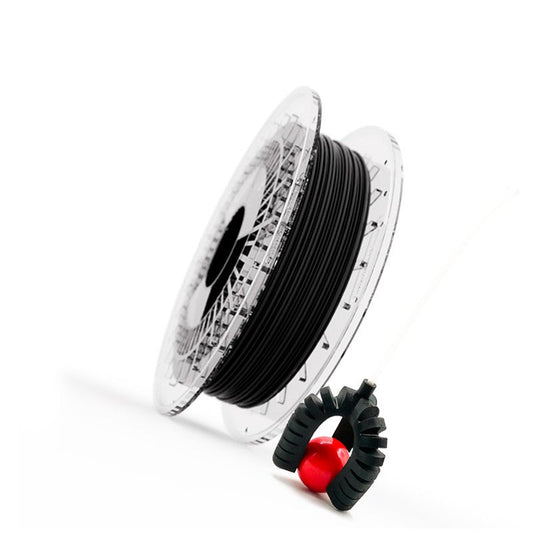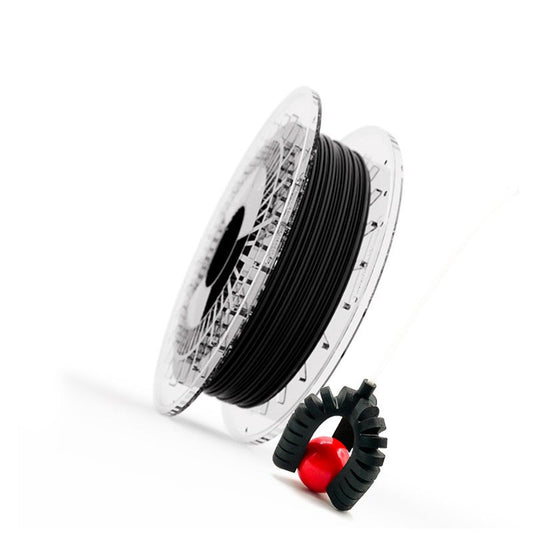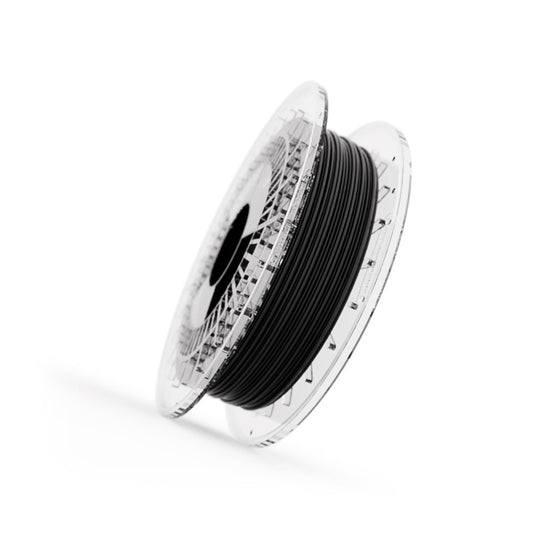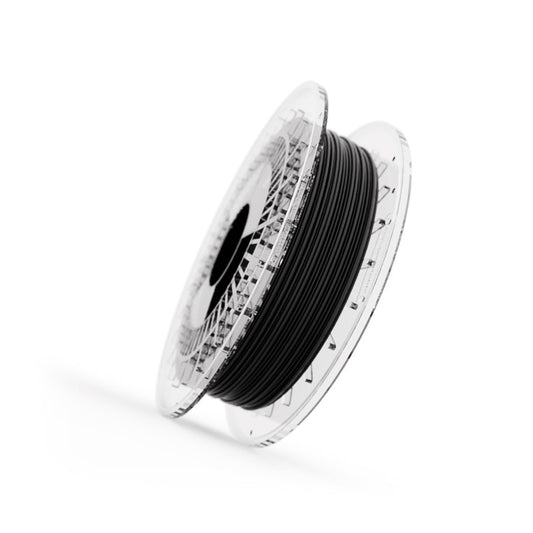Filaflex vs 'All-metal' hotends
Filaflex vs 'All-Metal' Hotends: Comprendere le sfide
"-Perché sto riscontrando problemi durante la stampa del filamento elastico Filaflex con l'ugello 'All-Metal' sulla mia stampante 3D?"
Questa è sicuramente una delle domande più frequenti e comuni che il nostro servizio clienti di solito riceve.
Per aiutarLa a comprendere questo argomento, abbiamo preparato alcune grafiche molto pratiche che chiariscono il motivo della difficoltà di stampare questo tipo di materiali elastici, come il nostro filamento flessibile Filaflex, su una stampante dotata di un ugello 'All-Metal', come, ad esempio, l'ugello della stampante Prusa MK3S.
Ora analizzeremo questa combinazione di elementi e dettaglieremo le possibili soluzioni che raccomandiamo.

Problema di... attrito!
Fondamentalmente, il problema può essere riassunto in una parola: 'attrito'.
Quando si stampa un filamento flessibile in TPU come il Filaflex in un hotend 'All-Metal' come la stampante Prusa MK3S, qualcosa di molto comune che solitamente accade in questo tipo di hotends è cheNon ha una buona superficie interna lucida o potrebbe soffrire di un cattivo raffreddamento nell'area del fusto..
Pertanto, durante la stampa, è probabile che si verifichiproblemi di flusso intermittente o discontinuo del filamento.
Espansione termica
E Lei potrebbe chiedersi, cosa causa esattamente questo flusso discontinuo o intermittente, perché stampa così male?
Questo problema è causato dal {{ ... }}Espansione termicache il filamento subisce all'interno del cilindro e dalla sua alta predisposizione ad aderire alla superficie del cilindro. Questo effetto aumenterà man mano che il filamento diventa più elastico. Cioè, se stampiamo con filamenti con Shore più bassi, per esempio, Filaflex 70A o Filaflex 60A, l'aderenza sarà molto maggiore e l'impossibilità di stampare, anche.
Il filamento elastico tende ad aderire alla superficie metallica interna e calda del cilindro, rendendo molto difficile il suo flusso e la corretta stampa. Ciò produrrà inceppamenti e flussi di estrusione del materiale discontinui.
Quando il filamento elastico si aggrappa o aderisce alla superficie interna, calda e metallica del cilindro, è molto difficile che possa fluire e stampare correttamente. Ciò produrrà inceppamenti e flussi di estrusione del materiale discontinui.
Vediamo nel grafico seguente dove e come avviene questa 'espansione termica':

Raccomandazioni
Pertanto, per stampare materiali flessibili con questo tipo di Hotends, raccomandiamo, per quanto possibile, quanto segue:
Mantenga la distanza minima tra le pulegge del motore e la punta dell'hotend.
Questo impedirà al filamento flessibile di comprimersi o aumentare il suo diametro all'interno del cilindro.
Inserisca un tubo PTFE nel cilindro dell'hotend.
D'altra parte, è consigliato che il nostro hotend abbia un PrezzoTubo PTFEe che sia molto ben raffreddato. Gli estrusori di tipo Bowden sono i più problematici, ma è possibile utilizzarli purché il tubo di alimentazione sia fatto diPTFENegli estrusori di questo tipo, è consigliabile utilizzare un filamento flessibile da 2,85 mm, poiché fornirà più forza di spinta rispetto a 1,75 mm.
Possiamo vedere nel grafico seguente come, introducendo unPTFEtubo che raggiunge l'area anteriore dell'Ugello, possiamo risolvere il problema dell'attrito del filamento con la parete metallica, così come eliminare l'effetto dell'espansione termica che potrebbe subire a causa dell'effetto dell'alta temperatura nel blocco di riscaldamento:

D'altra parte, è importante che ilPTFEil tubo è inserito il più possibile. Nell'immagine seguente possiamo chiaramente vedere la differenza tra l'E3D v6 hotend e l'E3D lite6.
- In Italiano, per favore.E3D v6di 1,75 mm il tubo si trova a metà nell'area del dissipatore di calore e si ferma con il cilindro, il che porta a che il filamento flessibile si fonda nell'area della rottura termica e non esegue una corretta estrusione.
- In Italiano, per favore.E3D lite6Il tubo in PTFE arriva fino al blocco riscaldante e passa attraverso il dissipatore di calore.

Nel seguente grafico possiamo vedere più chiaramente la differenza tra i due modelli, segnando la differenza comparativa con un cerchio giallo:

- A sinistra, ilE3D v6L'hotend presenta una mancanza di estensione del tubo PTFE nella parte inferiore del dissipatore di calore e del heat break. Questo causerà il riscaldamento del filamento in quell'area all'arrivo e ne impedirà la corretta estrusione.
- A destra, ilE3D lite6L'hotend, il cui tubo in PTFE arriva fino alla fine, protegge il filamento dall'attrito, impedendo così che subisca espansione termica e si attacchi alla superficie interna metallica del cilindro.
Importante Aggiornamento sui Moderni Hotend Interamente Metallici
Grazie ai recenti progressi tecnologici, in particolare con l'emergere del design dell'hotend di Bambu Lab sul mercato, il panorama degli hotend interamente in metallo è significativamente evoluto. Gli hotend interamente in metallo moderni presentano ora una superiore lucidatura della superficie interna e interruzioni termiche notevolmente migliorate, rendendoli sempre più capaci di gestire anche i nostri filamenti più flessibili, inclusi Filaflex 60A.
Questa interruzione del mercato ha portato a una nuova generazione di ugelli completamente in metallo che affrontano efficacemente le sfide storiche della stampa di filamenti flessibili, segnando un passo significativo avanti nella tecnologia di stampa 3D.









